Words and Images Patrick Kasingsing
Images LIXIL Philippines/Mikhail Serafica (ASDA 2023)


July 12, 2023. The night that ASDA national student winners have dreamed of finally transpired yesterday, as the 2023 edition of the prestigious American Standard Design Award culminated in grand style with an exhibit and awarding ceremony at Singapore’s The Arts House, a beautifully preserved 196-year-old heritage building that once housed the nation’s parliament.
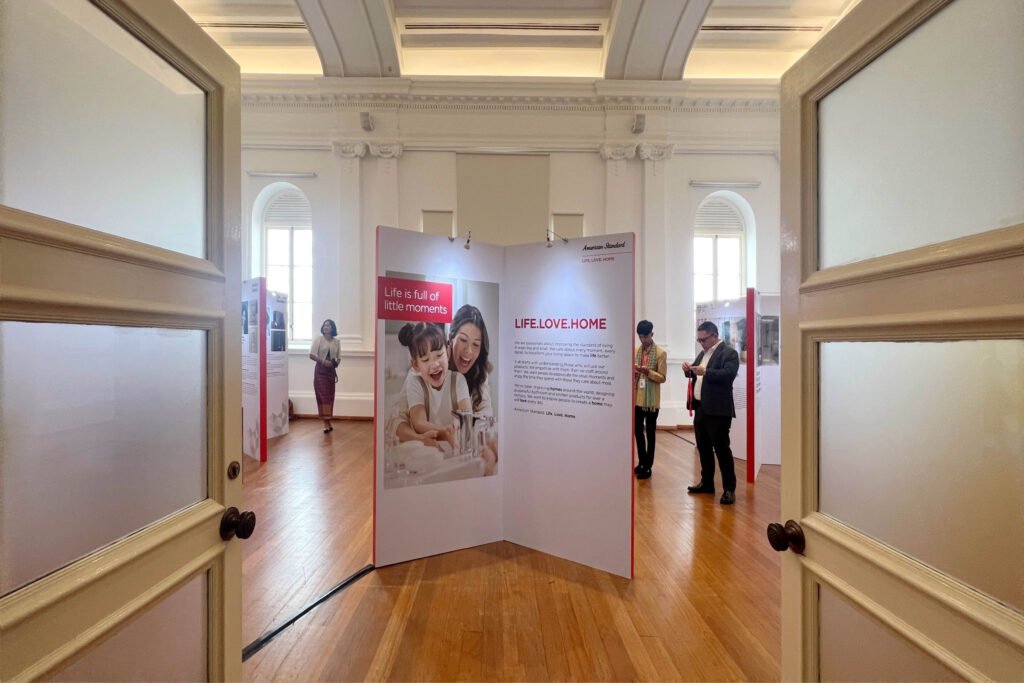
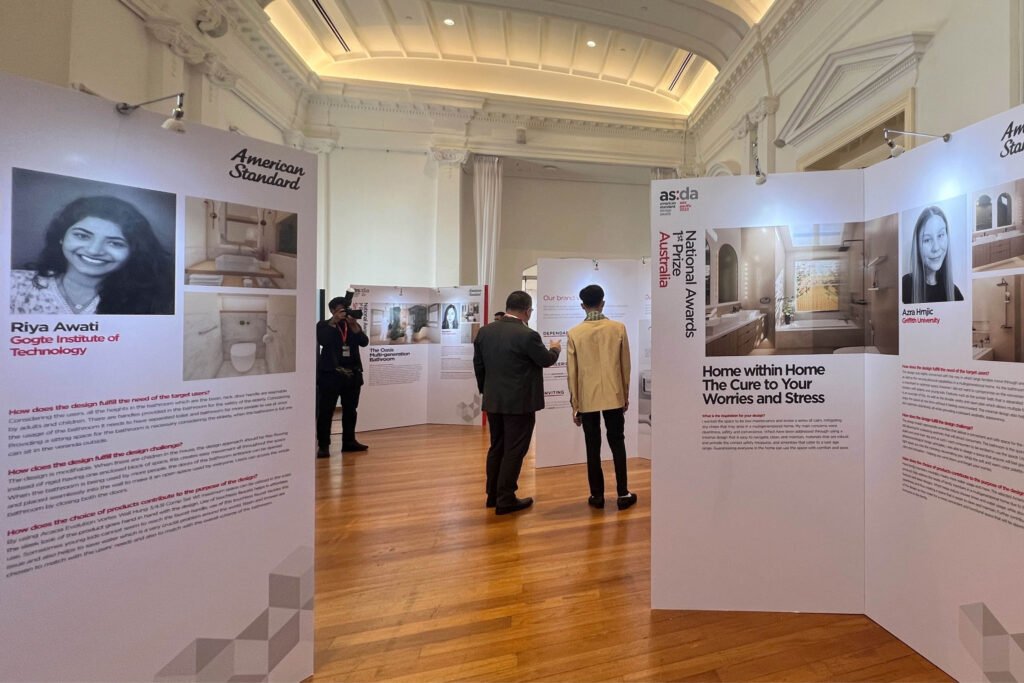



The storied Blue Room (where ministers and even LKY himself rested and held discussions in) hosted the design exhibit, staged in honor of the eight winning students, who all had to contend with this year’s design challenge: designing a bathroom space for a multigenerational household. After Azra Hrnjic (Australia), Riya Awati (India), Sin Ponleu (Cambodia, Laos, Myanmar), Grace Wong Jing Yee (Malaysia), Aevan Georgeline de Jesus (Philippines), Rossalinda (Singapore), Marisa Chonpracha (Thailand), and Duong Pham Ngoc Hoai (Vietnam) emerged victorious from the national rounds, a regional bout took place. Cambodian Sin Ponleu’s space-saving multigenerational bathroom solution was adjudged best of the best by a multinational panel of design luminaries and professionals.
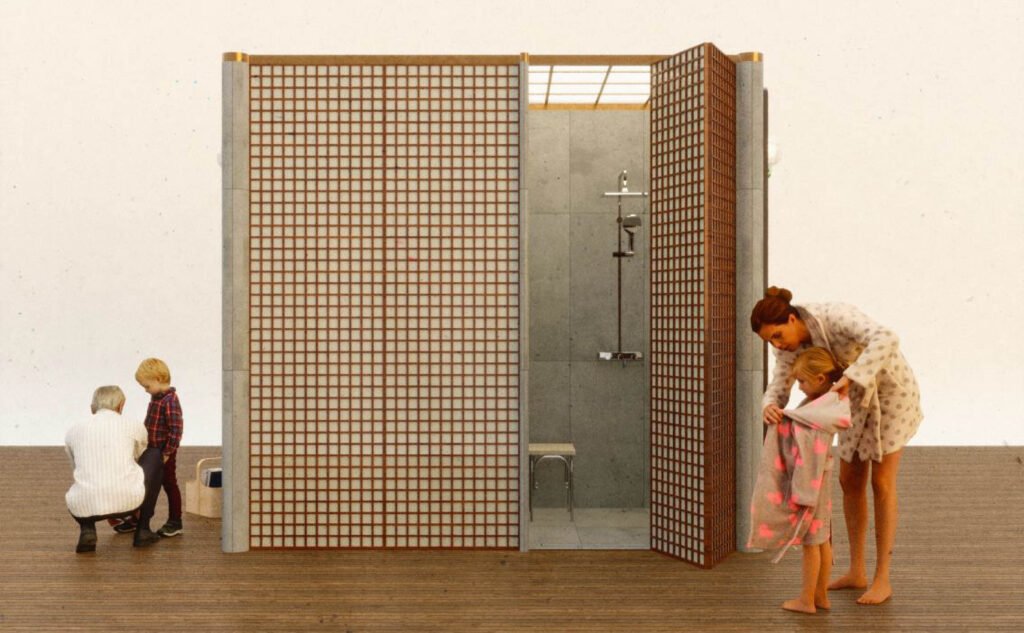
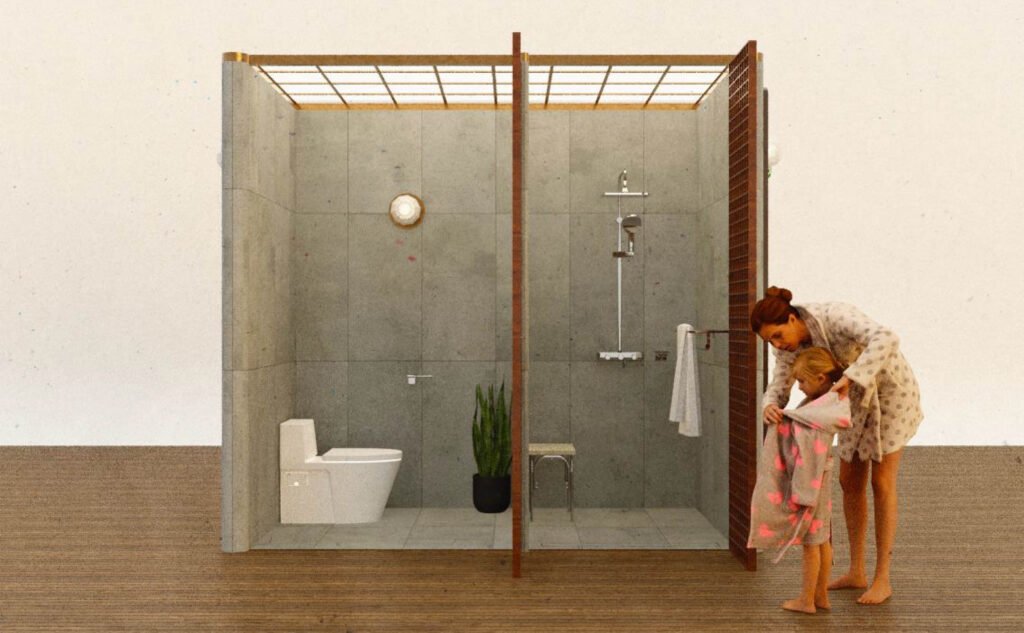
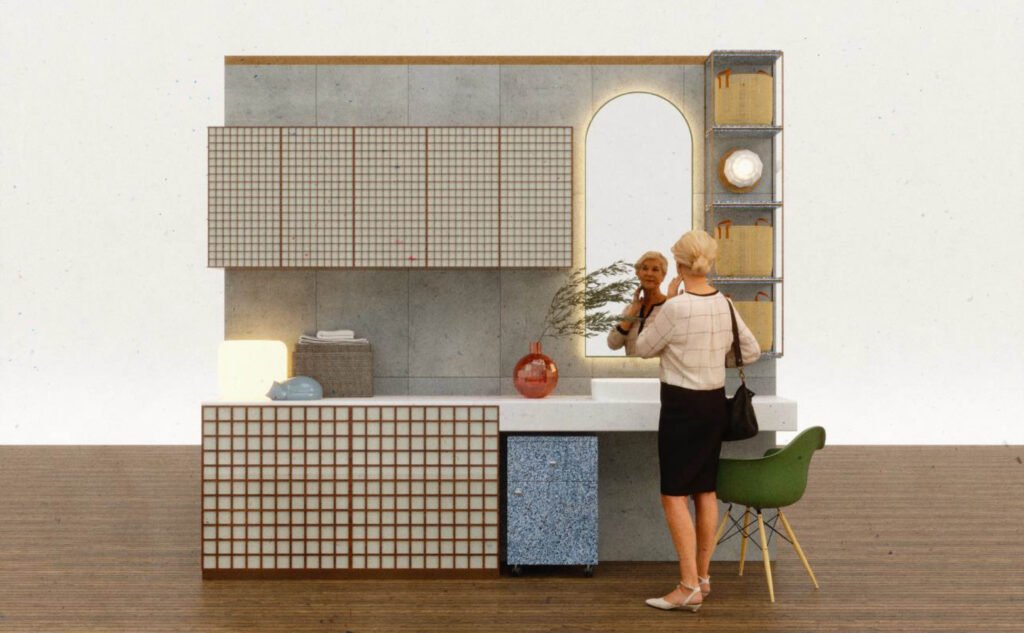
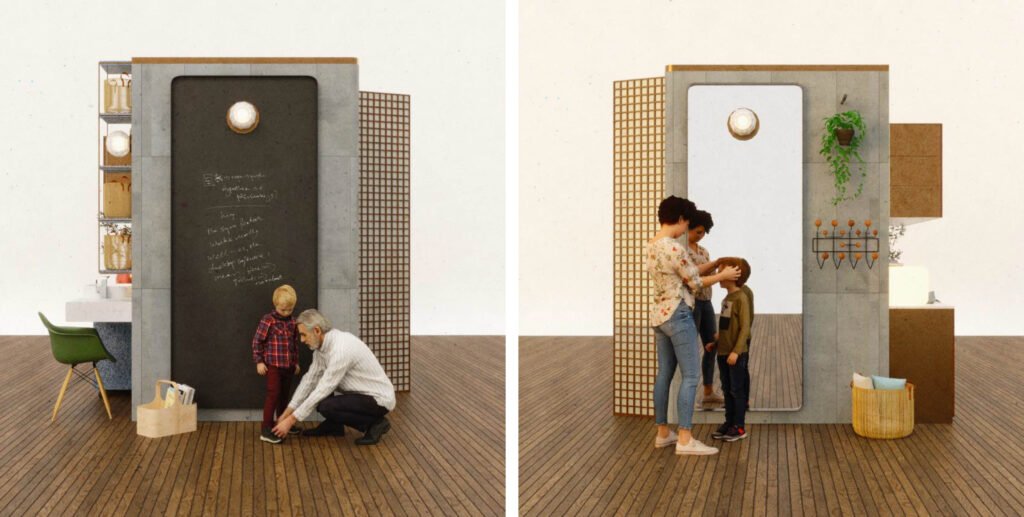

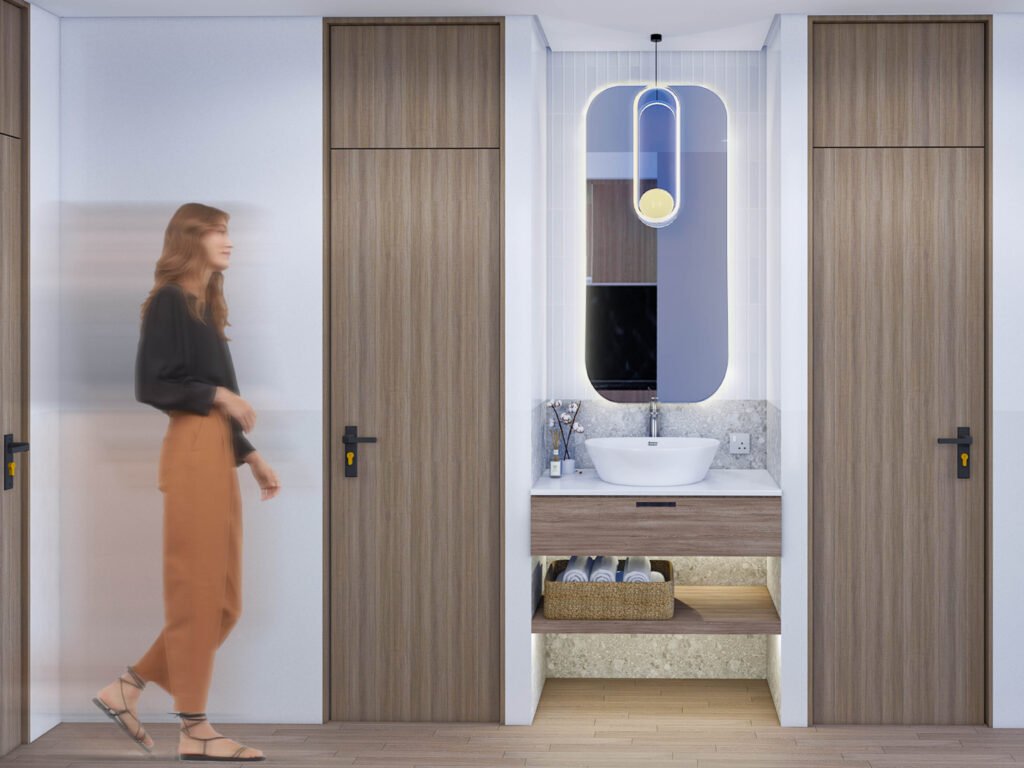
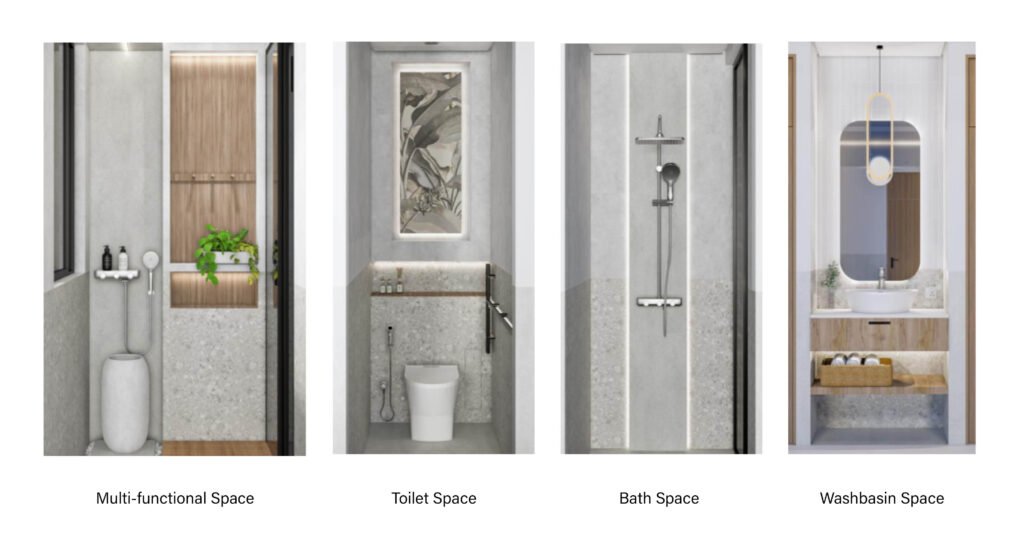

ASDA 2023 overall winner: One Space, One Love by Sin Ponleu of Cambodia
Before the evening wrapped up, we sat down with two ASDA winners, Sin Ponleu (grand winner, APAC) and Aevan de Jesus of the Philippines, where both shared the thoughts and insights they have gleaned from the competition.
Congratulations for being the national winner of ASDA! Tell us, what about your entry convinced the local jurors to crown you the winner of the competition?
Sin Ponleu, APAC Overall Winner, ASDA: Thank you! I think the jury was able to appreciate the wisdom behind the space-saving features of my design where I was able to balance the needs of a multigenerational household within a small footprint. I think one of the other things that the jury found laudable in my work is that the solution’s success does not just depend on utility, but also beauty by way of well-considered material choices and design gestures like the removable bench and ledge that encourage the beauty of familial relationships to shine through.
Aevan de Jesus, Philippine National Winner, ASDA: Thank you! It is truly an honor to be chosen as the national winner of ASDA. During the mentoring session with the ASDA Philippines team (with Atelier Almario’s Cynthia Almario, PDP Architects’ Cathy Saldana, WTA’s Arvin Pangilinan, and Lixil Philippines leader Hermie Limbo), they warmly greeted and welcomed me, which felt like a great start. They shared their insights about my winning design and explained that they recognized its strength during the presentation. They were particularly drawn to the incorporation of Filipino elements, such as the capiz-inspired door panels, which added a touch of Asian influence to the overall concept. The judges also appreciated the simplicity of The Grid, as it provided a fresh and modern approach to bathroom design, making it interactive and enjoyable for all users.
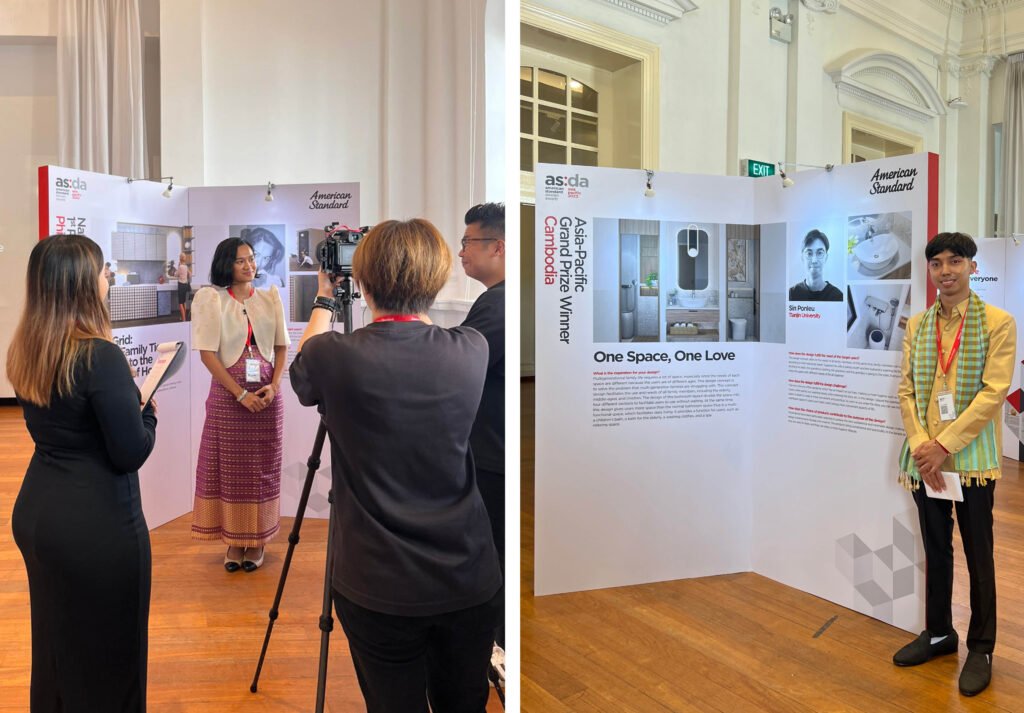

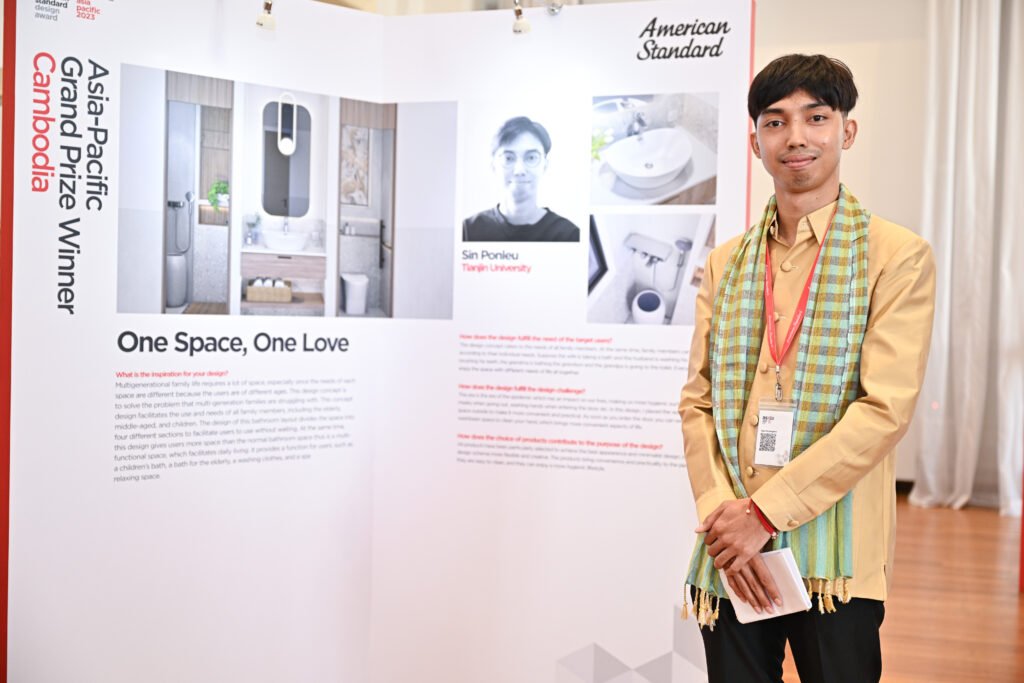

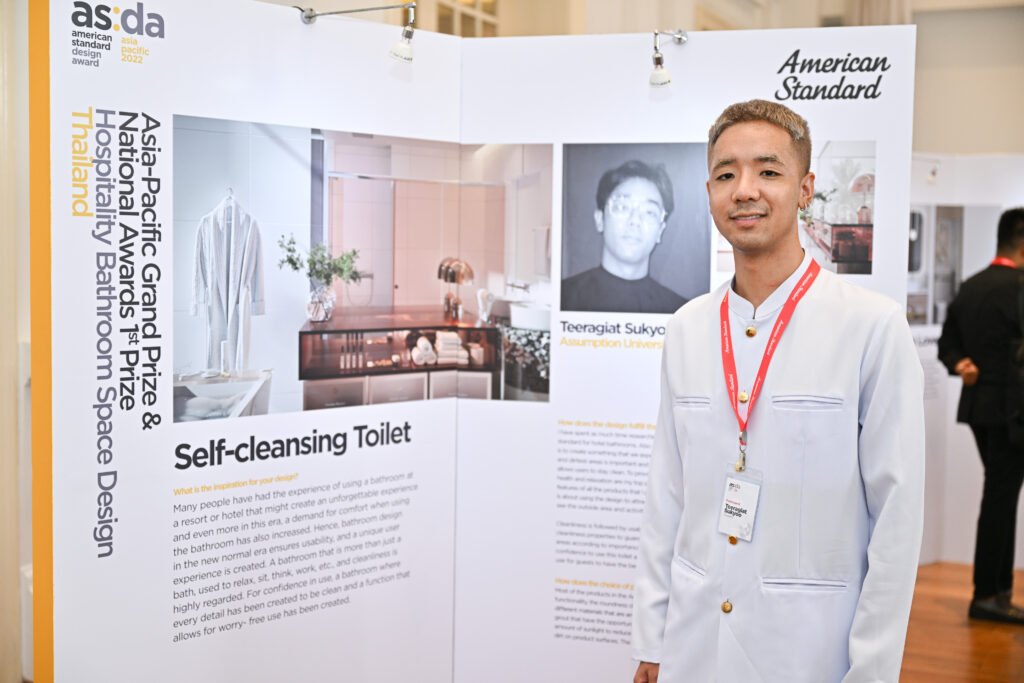
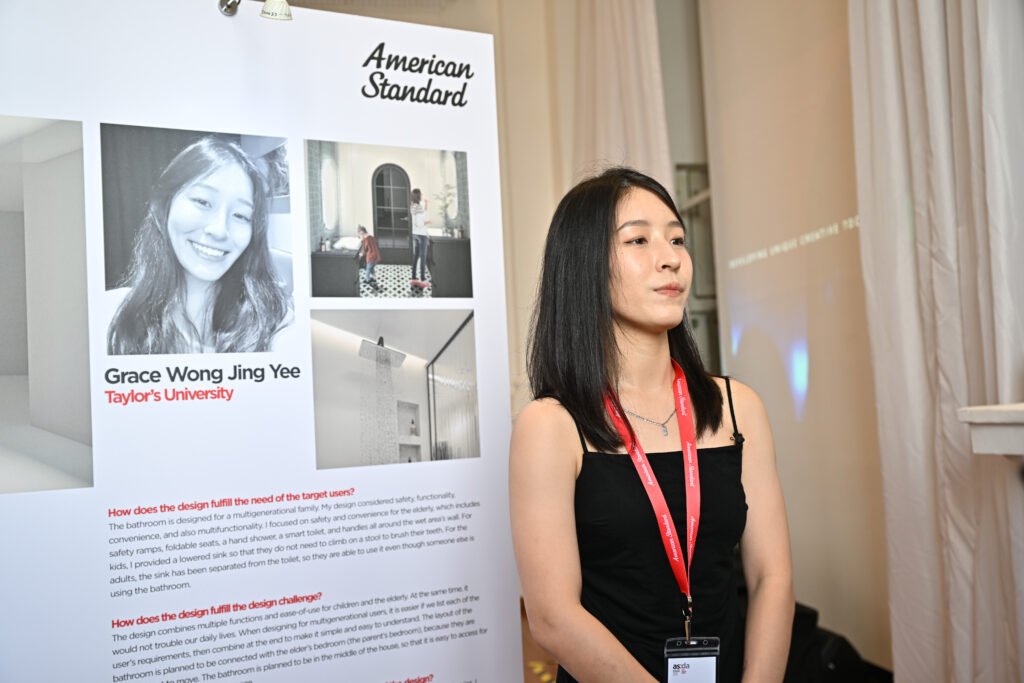
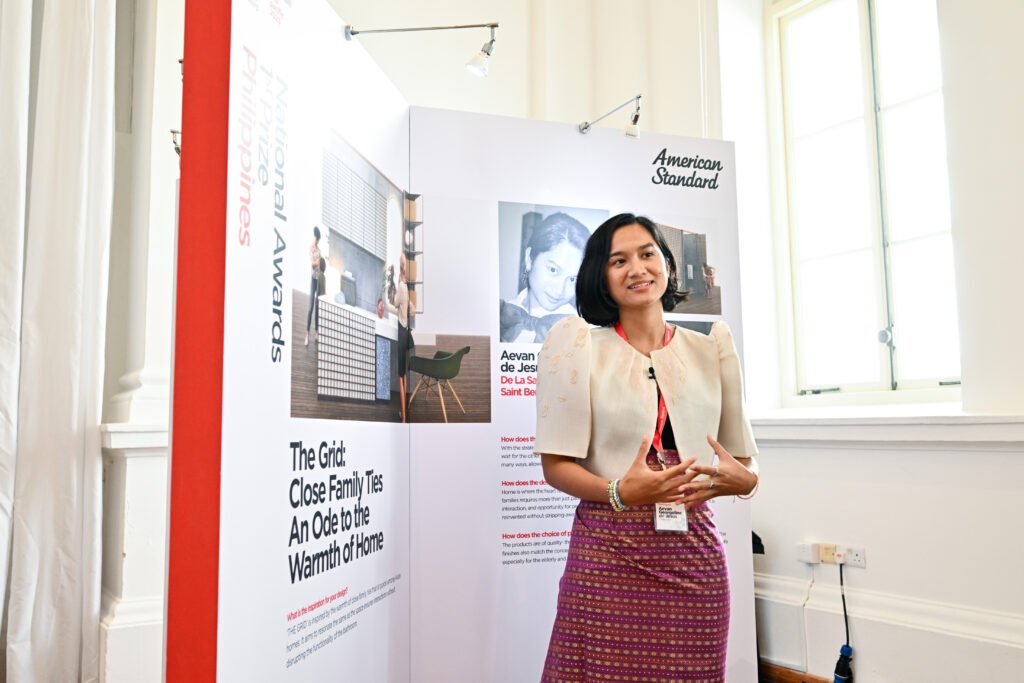
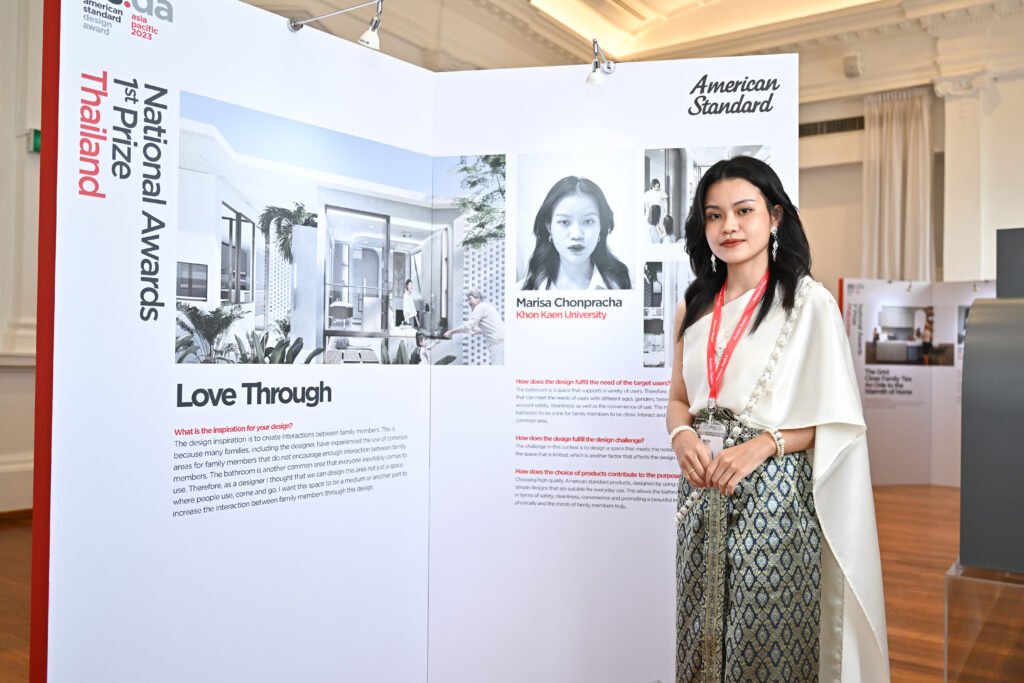

You have already won the national round. What would you say was your greatest challenge heading toward the regional competition? How did you improve on your previous presentation? Was there anything that you felt you could have done better?
Ponleu: We were no longer allowed to significantly alter our presentation decks so what I was able to do to improve my entry is to heed the juror’s advice about relocating the water closet in my design to accommodate easier access as well as utilizing sliding doors instead of a swing door to save more space. I would still consider the principal challenge of designing for a multigenerational age group as my biggest challenge as I needed all age groups’ needs satisfied but in way that balances utility and beauty.
De Jesus: One of the greatest challenges for me was managing my time and energy while working on my thesis and preparing for the regional competition simultaneously. Additionally, creating a walkthrough video proved challenging as I am not well-versed in using 3D software as of yet. However, I managed to overcome these obstacles by using animated images to effectively present my ideas. Since we weren’t allowed to revise our decks, I focused on rewriting my script entirely. I ensured that it was concise, clear, and specific regarding materials and systems. Moreover, I improved my manner of presentation by adopting a more confident and warm tone that aligned with the direction of my design. Looking back, I realize I could have been clearer with the positioning of my unconventional bathroom design in the perspective drawings. By showing how the house would look with such a design, I could have provided a better understanding of its unique shape and purpose.


The competition theme revolved around creating multi-generational bathrooms. How did you find the process of marrying cultural norms and traditions with present-day needs? What were your design priorities? Ultimately, what has the brief taught you about designing spaces across generations and the subject of sustainability?
Ponleu: I think what made the ASDA experience both memorable is that the challenge was a pain point in my own household. I live in a multigenerational household where we often have the problem of wanting to use the bathroom all at the same time, especially when the day begins. Like in a lot of Asian households, I’ve seen firsthand the struggles faced by the elderly, and the young, as well as how a family’s varying needs often clash with how our bathrooms are typically designed. My design seeks to reconcile these needs in a streamlined, high-performance space that finds beauty in material choices and design gestures. Sustainability is also prioritized by maximizing the use of space by multiple people at the same time, relying on less resources and energy.
De Jesus: My design process began with introspection, where I delved into my personal experiences and connection with the design brief and its intended users. As an artist, I believe in finding deep inspiration and establishing a connection when undertaking a design project. Drawing from my upbringing in a multi-generational home in the province, I recognized how Filipinos and Asians, despite the changes brought by modernity, continue to share room functions due to limited space in high-rise buildings. This practice reflects our culture of close family ties, which presents the challenge of organizing tasks and facilitating healthy boundaries among family members. However, it also offers the benefit of allowing more quality time together as a family without the need for travel or scheduled meetings.
My design priorities were to integrate the Asian culture of close family ties by honoring boundaries while initiating healthy interactions through the use of space. I also focused on ensuring flexibility, safety, and convenience through thoughtful designs and a collection of fixtures from American Standard that cater to the needs of the elderly and children. The design challenge taught me the importance of striking a balance between integrating culture, functionality, and sustainability, even in small spaces like the bathroom at home. This principle applies not only to private spaces but also to community, commercial, or institutional spaces where a variety of people gather. It is crucial to consider the needs of vulnerable users, including children, the elderly, and people with disabilities, without limiting our ideas to standard solutions.
As designers, our role is to innovate beautiful solutions that cater to multi-generational users. The experience has made me proud and humbled, as it allowed me to present a new way of approaching bathroom design. However, I acknowledge that there is room for improvement to make my design more feasible.
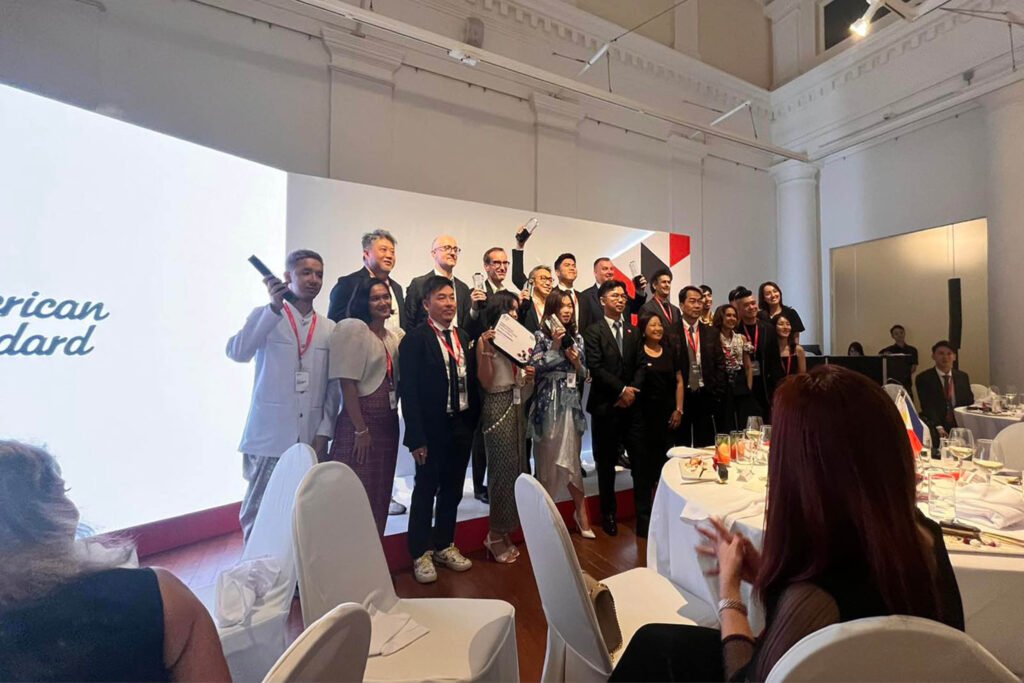





Design competitions provide a platform for designers like yourself to showcase skills and ideas. In what ways has participating in ASDA expanded your creative horizons and pushed you to explore new design possibilities?
Ponleu: Joining competitions like ASDA helps sharpen not just learnable design skills but also hone our user empathy and sensitivity to the spatial experience. It is vital for us designers to go beyond what we learn in school and be more open to out-of-classroom experiences and what these can teach but also offer us in terms of challenges that designers like my peers and I can solve.
De Jesus: Participating in ASDA 2023 has been an incredible opportunity to connect with people beyond my usual circle at school and among friends. Interacting with the ASDA team and judges has been a valuable experience. The design process for The Grid was mostly explored before winning, and it offered a different perspective as I focused on a single room, which was a significant departure from my previous works at school involving community centers on a larger scale. I am also excited to meet and befriend the other winners as we explore Singapore together and learn from a roster of esteemed designers. This competition has expanded my creative horizons, allowing me to discover new design possibilities and approaches.


Let’s look into the future. As an emerging architect/interior designer, how do you see participating in international design competitions shaping your professional growth? Do you see yourself joining more design competitions after ASDA? What skills, lessons, or learnings from this experience will you take with you on your journey toward becoming a professional designer?
Ponleu: Learning does not stop…learning is constant, this is why when I find time, I will continue to look for opportunities to broaden my knowledge of my craft and enhance my practice of design; joining competitions is one of them.
De Jesus: Participating in international design competitions will significantly contribute to my professional growth as an emerging designer. Competitions provide a platform to connect with industry leaders, establish new connections and friendships, and build self-confidence. They offer a chance to interact with esteemed individuals whom I may never have the opportunity to meet if I confine myself to my desk. In the past, I found substantial personal growth through competitions in school, which were both challenging and inspiring. Moving forward, I plan to join more design competitions without solely focusing on winning but rather embracing new design challenges and developing a more resilient design process beyond my studies.
Collaboration has been a challenge for me, as I’m more inclined to work alone; however, through this experience, I’ve recognized the importance of collaboration and the diverse roles involved in design. This lesson aligns with what I’m learning during my internships as well. Engaging with people in the industry has made me feel seen and part of the design community, leading to increased happiness and fulfillment despite the challenges of schooling, working, and navigating life in my 20s.
The ASDA 2023 experience has shown me the value of trying, showing up, and believing in oneself. By conquering my fear of rejection, failure, and embarrassment, I have been able to discover new facets of my potential and unlock wonderful opportunities in new environments. Therefore, I encourage my friends, younger design students, and even myself to continue engaging with the design industry in the myriad ways we can, like through competitions, utilizing the available tools and exploring beyond our desks. It is important to break patterns and open doors to new possibilities, all while enjoying and embracing life to the fullest.


When asked about the quality of this year’s entries, Martin Aerne, Swiss architect and educator from Cambodia-based Aerne Architects and Associates and a member of the APAC jury shares: “The quality for this year’s batch is quite good; there were some entries that really pushed the envelope of what can be done in bathroom design, experimenting with breaking the space out of the shielded, minuscule corner it is often relegated to in a home. Entries like “The Grid” were quite exciting to observe from this year’s batch, with its ambition to innovate on the typology, integrating cultural touches and nature into the bathroom space. The winning entry for the year by Ponleu is sensible, practical, and ticks most of the boxes necessary to address this year’s challenge of designing for multigenerational households.”
When asked about potential theme suggestions for next year, Aerne offers: “Exploring the capacity of bathrooms to offer poetic, emotive, and sensorial experiences would be good. Exploring tactile materiality, the use of scents, and spatial drama that only lighting can provide…the possibilities are endless, especially for precocious talent. There is also room for exploration in terms of breaking the bathroom out of its stuffy box and opening it up to nature; I am reminded of Asian washing practices of old where villagers gather around a water body or a well to wash and cleanse but also bond. Bathing was an experience then that put us in touch both with nature and our loved ones.”
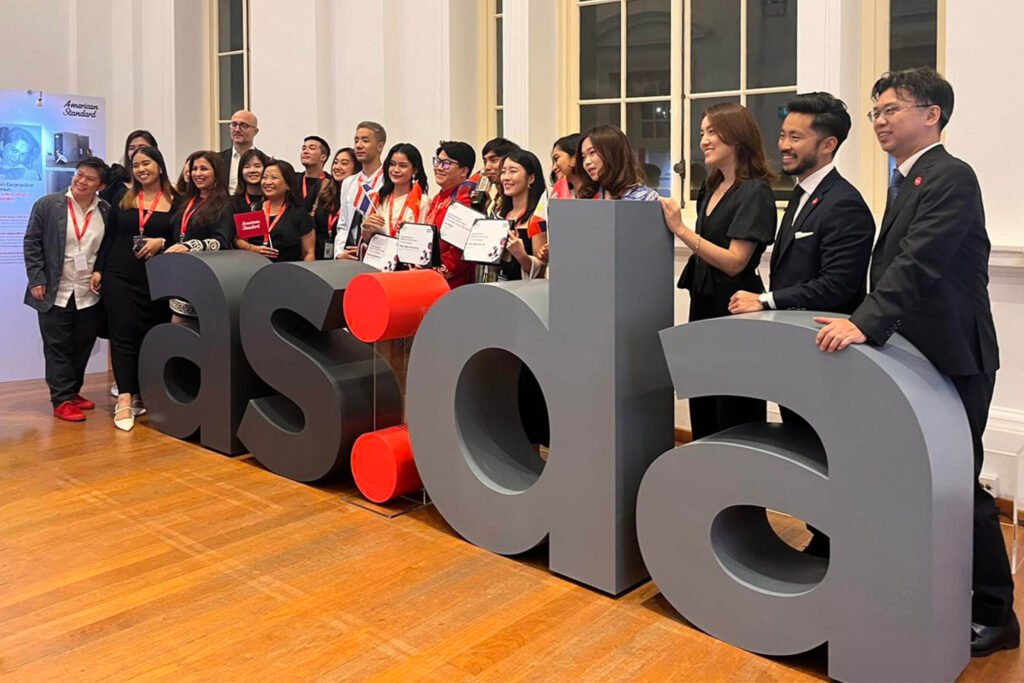

It was a busy night for our eight winners, who got the chance to present their entries yet again, but without the pressure of having to fight for their laurels. Each national awardee and finally the grand winner were awarded their participation certificates at the end of the night along with their corresponding cash prizes. A LIXIL Design Centre tour and a circuit of some of Singapore’s iconic landmarks await the winners today as part of their array of prizes. This edition is notable for the number of entries it attracted, with nearly 1,500 entries from the participating countries, a two-fold increase from ASDA 2022.
As another edition of ASDA wound to a close, LIXIL underscores the continuing importance of the competition to the company; “ASDA was instituted as a means for the brand to listen and interact with the design community, but also to offer our support to our next generation of creatives. The competition not only helps LIXIL discern the latest trends but also keeps us updated on the pressing needs our community of users and designers face,” Satoshi Konagai, LWT APAC Head shares.
What can we expect for ASDA 2024?
“We will ensure that ASDA continues to champion American Standard’s key principles of Life. Love. Home in future editions, most especially with the challenges. Bathroom design will still be our focus…we are however exploring ways to broaden the number of countries that can participate, both in student competitors and jurors, beyond the Asia Pacific.” •
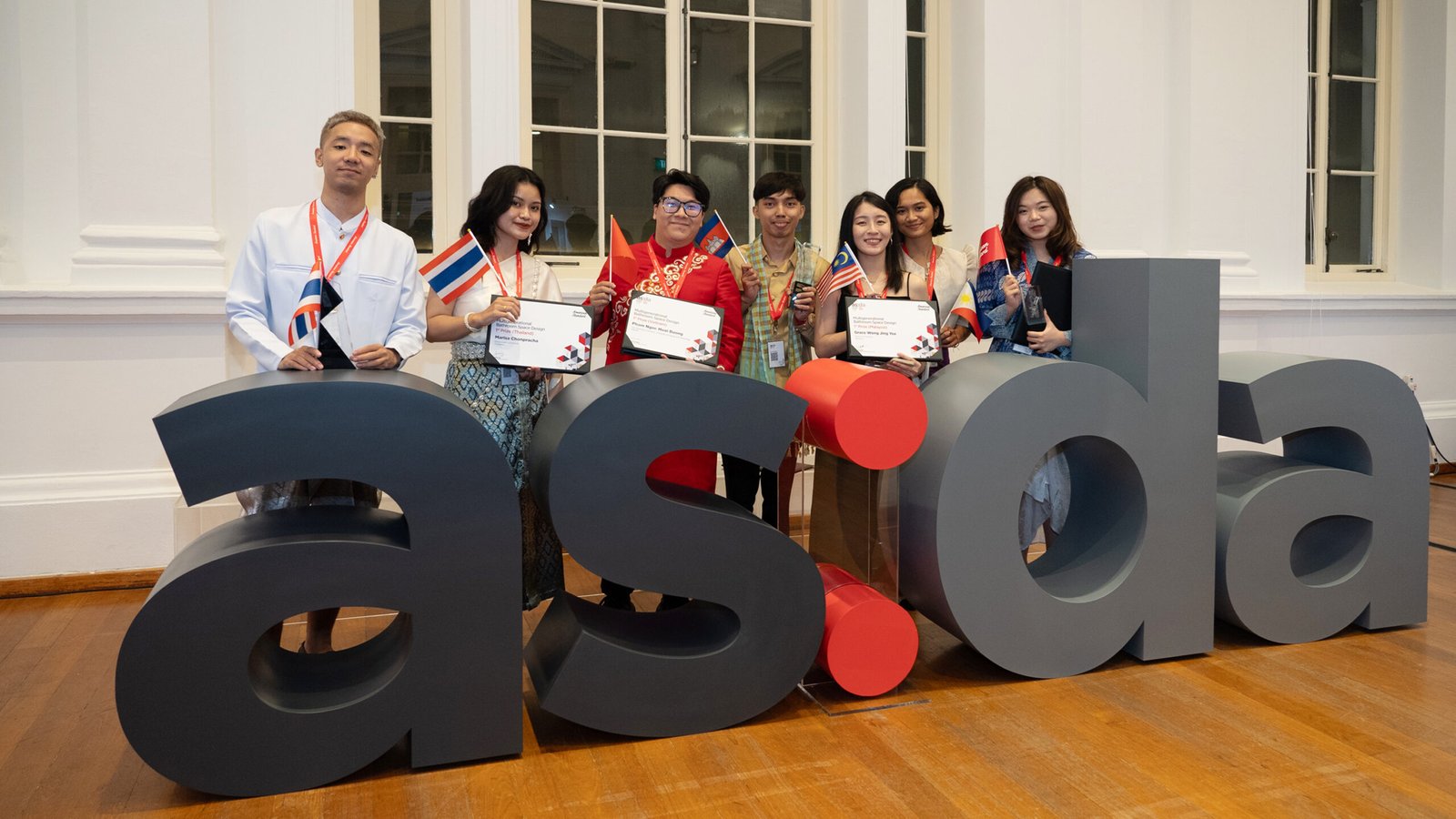

One Response